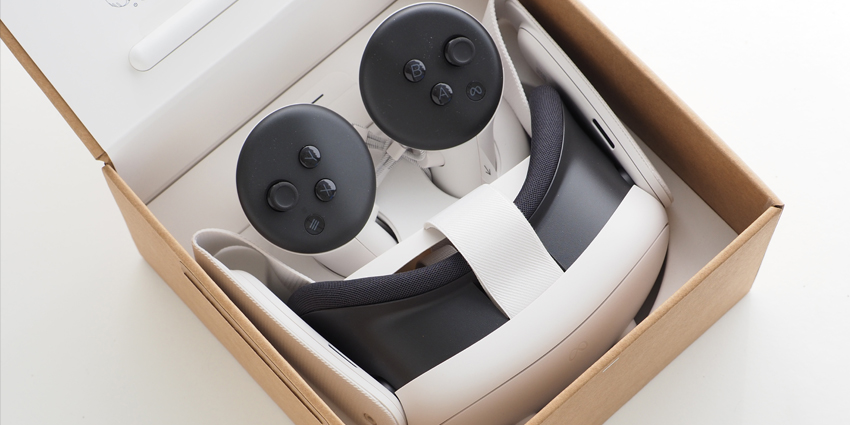As a concept, virtual reality has been around for much longer than most people realise. Way back in the 60s, gaming experts were already experimenting with immersive experiences. However, technology has only begun to really mature as a mainstream solution in recent years.
Ever since the pandemic accelerated digital transformation, interest in virtual, augmented, and mixed-reality experiences have been growing. In the last couple of years, we’ve begun to discover how immersive technologies can augment and enhance not just our personal lives but the professional landscape too. Today’s companies are leveraging VR for everything from employee training to job interviews, collaboration, and ideation.
Almost every employee can benefit from access to VR in the right context. However, professionals who already spend a significant amount of their time outside of the office, like remote assistants, could find the future of their roles relies heavily on virtual reality.
Discovering the Benefits of VR for Remote Assistants
Remote assistants have become a common part of the standard business landscape. Otherwise known as “virtual assistants”, these professionals are responsible for performing a range of administrative tasks on the behalf of clients and organisations from a remote location, such as a home office.
The tasks of the remote assistant often revolve around freeing up the schedule of other major employees, so they can focus their time and attention on more value-added processes. As a result, remote assistants often spend a lot of time tackling a myriad of tasks, from scheduling calls to managing email accounts and even interacting with customers.
Virtual Reality can significantly enhance a number of the tasks today’s remote assistants are responsible for. With the right headsets and software, remote assistants can engage in training sessions to help them understand a company’s specific processes and values. They can interact with other team members and candidates in the hiring landscape more effectively, and they can maintain a stronger emotional connection to the brands they work with.
Some of the main ways VR can boost remote assistant roles include:
Better Collaboration with Team Members
Successful collaboration and communication are crucial for virtual and remote assistants to perform well in their roles. The focus of a remote assistant is typically on making life easier for their clients by anticipating problems in advance, minimising repetitive work, improving organisation, and streamlining scheduling. However, in order to fully understand what a company really needs to thrive, the assistant first needs to get a behind-the-scenes look at the organisation.
With virtual reality, companies can provide their virtual assistants with a comprehensive insight into their day-to-day operations, processes, values, and business missions without the need for complex in-house interactions. What’s more, business leaders can open the door to more meaningful meetings and conversations between team members within a virtual environment.
Remote assistants can connect with employees easily to learn more about their training needs, help them set goals, and plan new strategies for the business. They can also use virtual reality to develop deeper relationships with each of their colleagues.
Improved HR and Recruitment Processes
While not all remote assistants will be involved in the recruiting and interviewing process, many do spend some time helping out with hiring and employee management. Since remote assistants work outside of the office, they’ve previously relied on calls, video conferencing, and email to screen potential applicants for jobs before they’re passed through to the interview process.
Unfortunately, these methodologies can often make it difficult to get a clear view of which candidates are truly suited to each role. With virtual reality, it’s possible for remote assistants to conduct much more in-depth screening practices. They can connect with potential candidates in a virtual world and ask them to complete tasks which might be relevant to their roles.
During a screening interview, a remote assistant could even take a potential candidate on a tour around the “virtual office” helping potential team members to get a feel for the company culture and the experiences they’re going to have on the job.
Enhanced Training and Learning Opportunities
The role of a remote assistant is extremely diverse and variable. These employees work on a host of different tasks and requirements for their employers, dealing with everything from email correspondence to social media marketing, content scheduling, research and accounting.
To consistently deliver amazing results, remote assistants first need a deeper understanding of the business they’re going to be working with, and the tasks they’re going to be completing. In the past, companies have relied on sending complex documentation and guidelines to would-be employees to prepare them for their new roles; however, these tools can often lead to confusion.
On the other hand, with virtual reality, it’s possible to deliver more hands-on, engaging training to remote assistants to prepare them for all kinds of tasks in the shortest amount of time possible. Countless companies have already begun using VR for training purposes, from NASA, to Siemens, and even UPS.
These companies have discovered that VR training can lead to better knowledge retention, improved engagement, and better overall understanding from new employees.
Enhance Client and Partner Interactions
In many businesses, a remote assistant will handle various interactions with partners, clients, contractors, and customers on the behalf of business leaders. Part of the assistant’s role in these environments is ensuring they preserve good relationships with the entire company community.
Although emails, text messages, and other forms of communication can still be valuable to preserving crucial connections, they can also make it harder to form strong emotional connections. Virtual Reality can offer assistants a new way to connect with contacts on a more impactful level.
With virtual reality, assistants can bring teams together to discuss supply chains, logistics, and other crucial aspects of running a business in an environment that’s brimming with insights and information. VR can also help assistants to onboard new clients, walk them through the process of purchasing and using services, and build the foundations for stronger long-term relationships.







